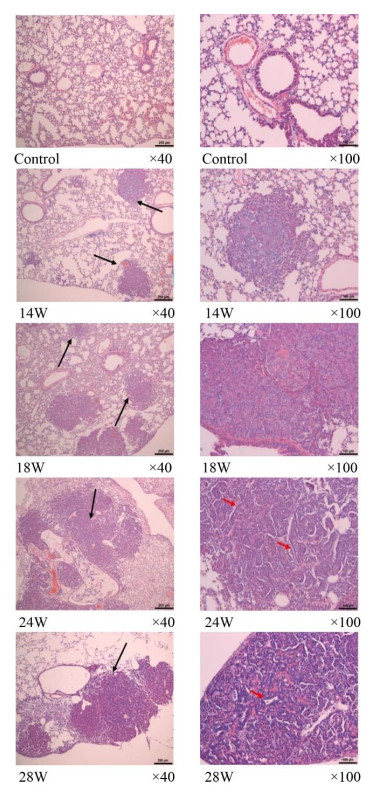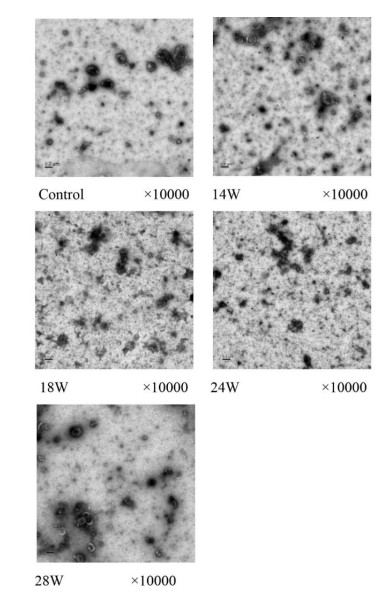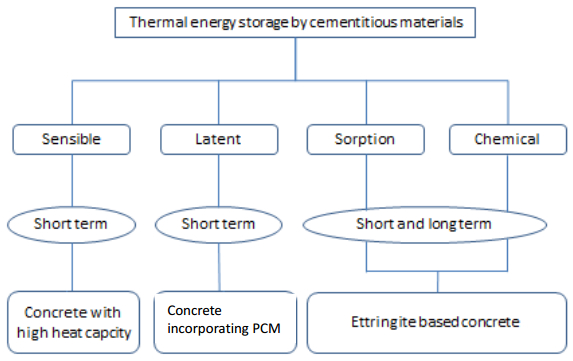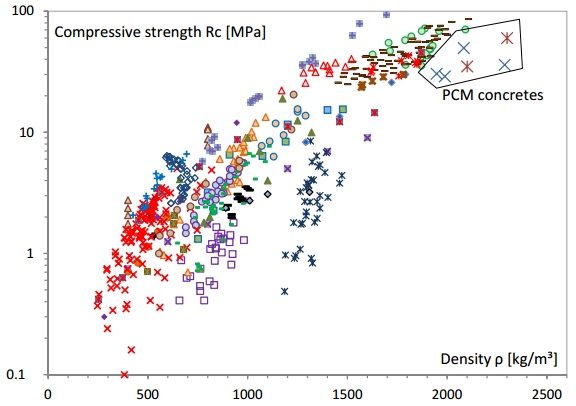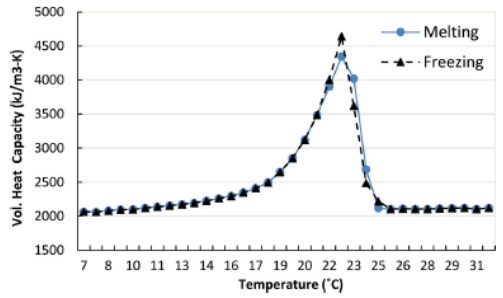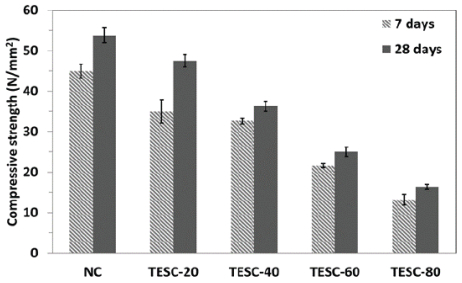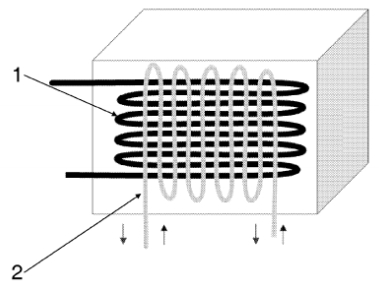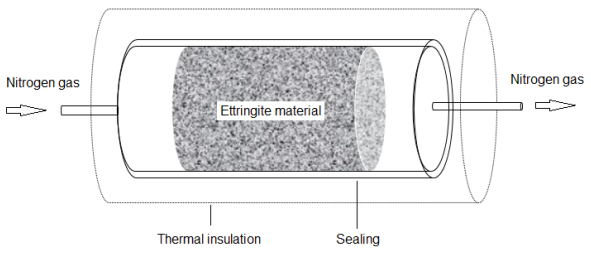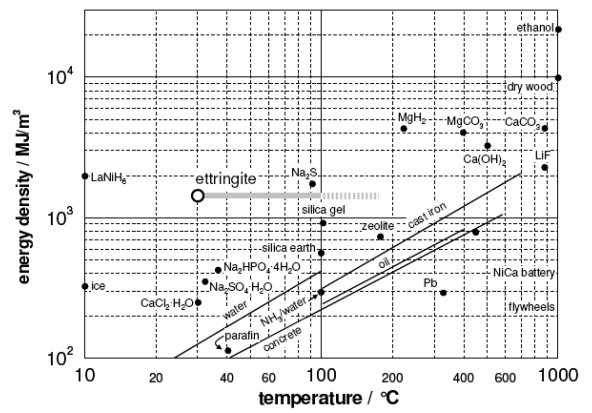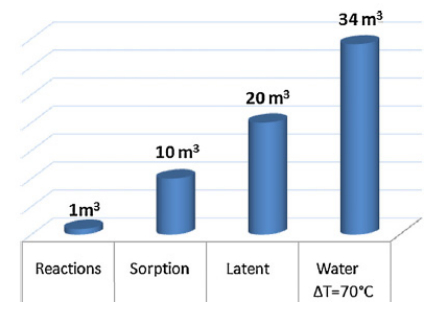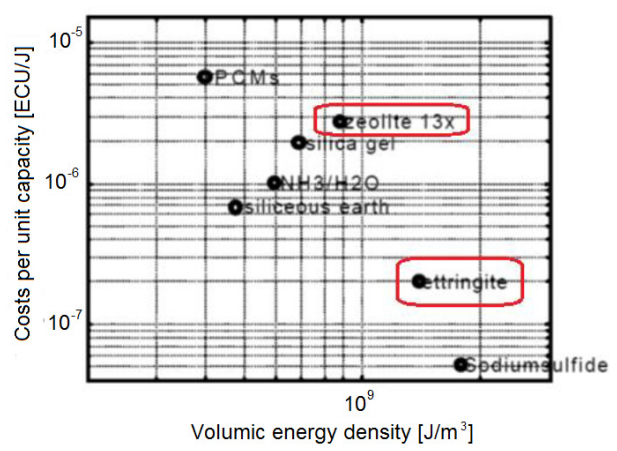|
[1]
|
Dehghana AA, Barzegarb A (2011) Thermal performance behavior of a domestic hot water solar storage tank during consumption operation. Energ Convers Manage 52: 468–476. doi: 10.1016/j.enconman.2010.06.075

|
|
[2]
|
Bopshetty SV, Nayak JK, Sukhatme SP (1992) Performance analysis of a solar concrete collector. Energ Convers Manage 33:1007–1016. doi: 10.1016/0196-8904(92)90135-J

|
|
[3]
|
Hazami M, Kooli S, Lazâar M, et al. (2010) Energetic and exergetic performances of an economical and available integrated solar storage collector based on concrete matrix. Energ Convers Manage 51: 1210–1218. doi: 10.1016/j.enconman.2009.12.032

|
|
[4]
|
Wu M, Li M, Xu C, et al. (2014) The impact of concrete structure on the thermal performance of the dual-media thermocline thermal storage tank using concrete as the solid medium. Appl Energy 113: 1363–1371. doi: 10.1016/j.apenergy.2013.08.044

|
|
[5]
|
Martins M, Villalobos U, Delclos T, et al. (2015) New Concentrating Solar Power Facility for Testing High Temperature Concrete Thermal Energy Storage. Energy Procedia 75: 2144–2149. doi: 10.1016/j.egypro.2015.07.350

|
|
[6]
|
Su L, Li N, Zhang X, et al. (2015) Heat transfer and cooling characteristics of concrete ceiling radiant cooling panel. Appl Therm Eng 84: 170–179. doi: 10.1016/j.applthermaleng.2015.03.045

|
|
[7]
|
Girardi M, Giannuzzi GM, Mazzei D, et al. (2017) Recycled additions for improving the thermal conductivity of concrete in preparing energy storage systems. Constr Build Mater 135: 565–579. doi: 10.1016/j.conbuildmat.2016.12.179

|
|
[8]
|
Ozrahat E, Ünalan S (2017) Thermal performance of a concrete column as a sensible thermal energy storage medium and a heater. Renew Energy 111: 561–579. doi: 10.1016/j.renene.2017.04.046

|
|
[9]
|
Giannuzzi GM, Liberatore R, Mele D, et al. (2017) Experimental campaign and numerical analyses of thermal storage concrete modules. Sol Energy 157: 596–602. doi: 10.1016/j.solener.2017.08.041

|
|
[10]
|
Salomoni VA, Majorana CE, Giannuzzi GM, et al. (2014) Thermal storage of sensible heat using concrete modules in solar power plants. Sol Energy 103: 303–315. doi: 10.1016/j.solener.2014.02.022

|
|
[11]
|
Mao Q, Zheng T, Liu D, et al. (2017) Numerical simulation of single spiral heat storage tank for solar thermal power plant. Int J Hydrogen Energy 42: 18240–18245. doi: 10.1016/j.ijhydene.2017.04.145

|
|
[12]
|
Farid MM, Khudhair AM, Razack SAK, et al. (2004) A review on phase change energy storage: materials and applications. Energy Convers Manage 45: 1597–1615. doi: 10.1016/j.enconman.2003.09.015

|
|
[13]
|
Pinel P, Cynthia AC, Beausoleil-Morrison I, et al. (2011) A review of available methods for seasonal storage of solar thermal energy in residential applications. Renew Sust Energ Rev 15: 3341–3359. doi: 10.1016/j.rser.2011.04.013

|
|
[14]
|
Zhu N, Ma Z, Wang S (2009) Dynamic characteristics and energy performance of buildings using phase change materials: a review. Energy Convers Manage 50: 3169–3181. doi: 10.1016/j.enconman.2009.08.019

|
|
[15]
|
Sharma RK, Ganesan P, Tyagi VV, et al. (2015) Developments in organic solid–liquid phase change materials and their applications in thermal energy storage. Energ Convers Manage 95: 193–228. doi: 10.1016/j.enconman.2015.01.084

|
|
[16]
|
Sun X, Zhang Q, Medina MA, et al. (2016) Parameter design for a phase change material board installed on the inner surface of building exterior envelopes for cooling in China. Energ Convers Manage 120: 100–108. doi: 10.1016/j.enconman.2016.04.096

|
|
[17]
|
Kuznik F, David D, Johannes K, et al. (2011) A review on phase change materials integrated in building walls. Renew Sust Energ Rev 15: 379–391. doi: 10.1016/j.rser.2010.08.019

|
|
[18]
|
Xu B, Li Z (2014) Performance of novel thermal energy storage engineered cementitious composites incorporating a paraffin/diatomite composite phase change material. Appl Energy 121: 114–122. doi: 10.1016/j.apenergy.2014.02.007

|
|
[19]
|
Memon SA, Cui HZ, Zhang H, et al. (2015) Utilization of macro encapsulated phase change materials for the development of thermal energy storage and structural lightweight aggregate concrete. Appl Energy 139: 43–55. doi: 10.1016/j.apenergy.2014.11.022

|
|
[20]
|
Thiele AM, Sant G, Pilon L (2015) Diurnal thermal analysis of microencapsulated PCM-concrete composite walls. Energ Convers Manage 93: 215–227. doi: 10.1016/j.enconman.2014.12.078

|
|
[21]
|
Zhou G, Pang M (2015) Experimental investigations on the performance of a collector–storage wall system using phase change materials. Energ Convers Manage 105: 178–188. doi: 10.1016/j.enconman.2015.07.070

|
|
[22]
|
Ramakrishnan S, Sanjayan J, Wang X, et al. (2015) A novel paraffin/expanded perlite composite phase change material for prevention of PCM leakage in cementitious composites. Appl Energy 157: 85–94. doi: 10.1016/j.apenergy.2015.08.019

|
|
[23]
|
Wang X, Yu H, Li L, et al. (2016) Experimental assessment on the use of phase change materials (PCMs)-bricks in the exterior wall of a full-scale room. Energ Convers Manage 120: 81–89. doi: 10.1016/j.enconman.2016.04.065

|
|
[24]
|
Cui H, Tang W, Qin Q, et al. (2017) Development of structural-functional integrated energy storage concrete with innovative macro-encapsulated PCM by hollow steel ball. Appl Energy 185: 107–118. doi: 10.1016/j.apenergy.2016.10.072

|
|
[25]
|
Hembade L, Neithalath N, Rajan SD (2014) Understanding the Energy Implications of Phase-Change Materials in Concrete Walls through Finite-Element Analysis. J Energy Eng 140.
|
|
[26]
|
Cui H, Memon SA, Liu R (2015) Development, mechanical properties and numerical simulation of macro encapsulated thermal energy storage concrete. Energ Buildings 96: 162–174. doi: 10.1016/j.enbuild.2015.03.014

|
|
[27]
|
Arora A, Sant G, Neithalath N (2017) Numerical simulations to quantify the influence of phase change materials (PCMs) on the early-and later-age thermal response of concrete pavements. Cem Concr Compos 81: 11–24. doi: 10.1016/j.cemconcomp.2017.04.006

|
|
[28]
|
Šavija B, Zhang H, Schlangen E (2017) Influence of microencapsulated phase change material (PCM) addition on (micro) mechanical properties of cement paste. Materials 10: 863. doi: 10.3390/ma10080863

|
|
[29]
|
Michel B, Mazet N, Neveu P (2014) Experimental investigation of an innovative thermochemical process operating with a hydrate salt and moist air for thermal storage of solar energy: Global performance. Appl Energy 129: 177–186. doi: 10.1016/j.apenergy.2014.04.073

|
|
[30]
|
Pons M, Laurent D, Meunier F (1996) Experimental temperature fronts for adsorptive heat pump applications. Appl Therm Eng 16: 395–404. doi: 10.1016/1359-4311(95)00025-9

|
|
[31]
|
Sun LM, Feng Y, Pons M (1997) Numerical investigation of adsorptive heat pump systems with thermal wave heat regeneration under uniform-pressure conditions. Int J Heat Mass Transfer 2: 281–293.
|
|
[32]
|
Mhimid A (1998) Theoretical study of heat and mass transfer in a zeolite bed during water desorption: validity of local thermal equilibrium assumption. Int J Heat Mass Transfer 41: 2967–2977. doi: 10.1016/S0017-9310(98)00010-6

|
|
[33]
|
Leong KC, Liu Y (2004) Numerical modeling of combined heat and mass transfer in the adsorbent bed of a zeolite/water cooling system. Appl Therm Eng 24: 2359–2374. doi: 10.1016/j.applthermaleng.2004.02.014

|
|
[34]
|
Hongois S, Kuznik F, Stevens P, et al. (2011) Development and characterization of a new MgSO4 - zeolite composite for long-term thermal energy storage. Sol Energy Mater Sol Cells 95: 1831–1837. doi: 10.1016/j.solmat.2011.01.050

|
|
[35]
|
Duquesne M, Toutain J, Sempey A, et al. (2014) Modeling of a nonlinear thermochemical energy storage by adsorption on zeolites. Appl Therm Eng 1: 469–480.
|
|
[36]
|
Scapino L, Zondag HA, Van Bael J, et al. (2017) Sorption heat storage for long-term low-temperature applications: A review on the advancements at material and prototype scale. Appl Energy 190: 920–948. doi: 10.1016/j.apenergy.2016.12.148

|
|
[37]
|
Lehmann C, Beckert S, Gläser R, et al. (2017) Assessment of adsorbate density models for numerical simulations of zeolite-based heat storage applications. Appl Energy 185: 1965–1970. doi: 10.1016/j.apenergy.2015.10.126

|
|
[38]
|
Semprini S, Lehmann C, Beckert S (2017) Numerical modelling of water sorption isotherms of zeolite 13XBF based on sparse experimental data sets for heat storage applications. Energ Convers Manage 150: 392–402. doi: 10.1016/j.enconman.2017.08.033

|
|
[39]
|
Stevens P, Hongois S (2009) Matériau et procédé de stockage d'énergie thermique. Patent EP 2163520 A1, filed September 3, 2009.
|
|
[40]
|
Levitskij EA, Aristov YI, Tokarev MM, et al. (1996) "Chemical Heat Accumulators": A new approach to accumulating low potential heat. Sol Energy Mater Sol Cells 44: 219–235. doi: 10.1016/0927-0248(96)00010-4

|
|
[41]
|
Aristov YI, Tokarev MM, Cacciola G, et al. (1996) Selective Water Sorbents for Multiple Applications, 1. CaCl2 Confined in Mesopores of Silica Gel: Sorption Properties. React Kinet Catal Lett 59: 325–333.
|
|
[42]
|
Aristov YI, Restuccia G, Tokarev MM, et al. (2000) Selective Water Sorbents for Multiple Applications. 11. CaCl2 Confined to Expanded Vermiculite. React Kinet Catal Lett 71: 377–384. doi: 10.1023/A:1010351815698

|
|
[43]
|
Aristov YI (2009) Optimal adsorbent for adsorptive heat transformers: Dynamic considerations. Int J Refrig 32: 675–686. doi: 10.1016/j.ijrefrig.2009.01.022

|
|
[44]
|
Aristov YI (2012) Adsorptive transformation of heat: Principles of construction of adsorbents database. Appl Therm Eng 42: 18–24. doi: 10.1016/j.applthermaleng.2011.02.024

|
|
[45]
|
Hadorn JC (2008) Advanced storage concepts for active solar energy - IEA SHC Task32 2003–2007. EuroSun -1st international conference on solar heating, cooling and buildings, Lisbon, Portugal.
|
|
[46]
|
Yu N, Wang RZ, Wang LW (2013) Sorption thermal storage for solar energy. Prog Energy Combust Sci 39: 489–514. doi: 10.1016/j.pecs.2013.05.004

|
|
[47]
|
Schaube F, Koch L, Wörner A, et al. (2012) A thermodynamic and kinetic study of the de- and rehydration of Ca(OH)2 at high H2O partial pressures for thermo-chemical heat storage. Thermochim Acta 538: 9–20. doi: 10.1016/j.tca.2012.03.003

|
|
[48]
|
Rougé S, Criado YA, Soriano O, et al. (2017) Continuous CaO/Ca(OH)2 fluidized bed reactor for energy storage: first experimental results and reactor model validation. Ind Eng Chem Res 56: 844–852. doi: 10.1021/acs.iecr.6b04105

|
|
[49]
|
Kalyva EA, Vagia ECH, Konstandopoulos AG, et al. (2017) Particle model investigation for the thermochemical steps of the sulfur–ammonia water splitting cycle. Int J Hydrogen Energy 42: 3621–3629. doi: 10.1016/j.ijhydene.2016.09.003

|
|
[50]
|
Criado YA, Huille A, Rougé S, et al. (2017) Experimental investigation and model validation of a CaO/Ca(OH)2 fluidized bed reactor for thermochemical energy storage applications. Chem Eng J 313: 1194–1205. doi: 10.1016/j.cej.2016.11.010

|
|
[51]
|
Struble LJ, Brown PW (1986) Heats of dehydration and specific heats of compounds found in concrete and their potential for thermal energy storage. Sol Energy Mater 1: 1–12.
|
|
[52]
|
Winnefeld F, Kaufmann J (2011) Concrete produced with calcium sulfoaluminate cement: a potential system for energy and heat storage. First Middle East conference on smart monitoring, assessment and rehabilitation of civil structures (SMAR 2011), Dubai, United Arab Emirates.
|
|
[53]
|
Ndiaye K (2016) Etude numérique et expérimentale du stockage d'énergie par les matériaux cimentaires. PhD Thesis, Université Toulouse III.
|
|
[54]
|
Cyr M, Ginestet S, Ndiaye K (2015) Energy storage/withdrawal system for a facility. Patent WO 2017089698 A1, issued June 1, 2017.
|
|
[55]
|
Ndiaye K, Ginestet S, Cyr M (2017) Modelling and experimental study of low temperature energy storage reactor using cementitious material. Appl Therm Eng 110: 601–615. doi: 10.1016/j.applthermaleng.2016.08.157

|
|
[56]
|
Ndiaye K, Ginestet S, Cyr M (2017) Durability and stability of an ettringite-based material for thermal energy storage at low temperature. Cem Concr Res 99: 106–115. doi: 10.1016/j.cemconres.2017.05.001

|
|
[57]
|
Narayanan N, and Ramamurthy K (2000) Structure and properties of aerated concrete: a review. Cem Concr Compos 22: 321–329. doi: 10.1016/S0958-9465(00)00016-0

|
|
[58]
|
Valore RC (1954) Cellular concretes-composition and methods of preparation. J Am Concr Inst 25: 773–795.
|
|
[59]
|
Rudnai G (1963) Light weight concretes. Budapest: Akademi Kiado.
|
|
[60]
|
Shrivastava OP (1977) Lightweight aerated or cellular concrete - a review. Indian Concr J 51: 18–23.
|
|
[61]
|
RILEM recommended practice (1993) Autoclaved aerated concrete - Properties, testing and design. E&FN SPON, ISBN 0419179607.
|
|
[62]
|
CEB Manual of design and technology (1977) Autoclaved aerated concrete. Construction Press, ISBN 0904406768.
|
|
[63]
|
Midgley HG, Chopra SK (1960) Hydrothermal reactions between lime and aggregate. Mag Concr Res 12: 73–82. doi: 10.1680/macr.1960.12.35.73

|
|
[64]
|
Mitsuda T, Kiribayashi T, Sasaki K, et al. (1992) Influence of hydrothermal processing on the properties of autoclaved aerated concrete, In: Wittmann FH, editor. Proceedings Advances in Autoclaved Aerated Concrete, 11–18.
|
|
[65]
|
Schober G (1992) Effect of size distribution of air pores in AAC on compressive strength. In: Whittmann FH, editor. Proceedings Advances in Autoclaved Aerated Concrete, 77–81.
|
|
[66]
|
Gabriel S, Phelipot-Mardelé A, Lanos C (2017) A review of thermomechanical properties of lightweight concrete. Mag Concr Res 69: 201–216. doi: 10.1680/jmacr.16.00324

|
|
[67]
|
Narain J, Jin W, Ghandehari M, et al. (2016) Design and application of concrete tiles enhanced with microencapsulated phase-change-material. J Archit Eng 22: 05015003. doi: 10.1061/(ASCE)AE.1943-5568.0000194

|
|
[68]
|
Cao VD, Pilehvar S, Salas-Bringas C, et al. (2017) Microencapsulated phase change materials for enhancing the thermal performance of Portland cement concrete and geopolymer concrete for passive building applications. Energ Convers Manage 133: 56–66. doi: 10.1016/j.enconman.2016.11.061

|
|
[69]
|
Bave G (1980) Aerated light weight concrete-current technology. In: Proceedings of the Second International Symposium on Lightweight Concretes. London.
|
|
[70]
|
Watson KL, Eden NB, Farrant JR (1977) Autoclaved aerated materials from slate powder and Portland cement. Precast Concr, 81–85.
|
|
[71]
|
Laurent JP, Guerre-Chaley C (1995) Influence of water content and temperature on the thermal conductivity of autoclaved aerated concrete. Mater Struct 28: 164–172.
|
|
[72]
|
Richard TG (1977) Low temperature behaviour of cellular concrete. J Am Concr Inst 47: 173–178.
|
|
[73]
|
Valore RC (1956) Insulating concretes. J Am Concr Inst 28: 509–532.
|
|
[74]
|
Tada S (1986) Material design of aerated concrete-An Optimum Performance Design. Mater Struct 19: 21–26. doi: 10.1007/BF02472306

|
|
[75]
|
Wagner F, Schober G, Mortel H (1995) Measurement of gas permeability of autoclaved aerated concrete in conjunction with its physical properties. Cem Concr Res 25: 1621–1626. doi: 10.1016/0008-8846(95)00157-3

|
|
[76]
|
Jacobs F, Mayer G (1992) Porosity and permeability of autoclaved aerated concrete. In: Wittmann FH, editor. Proceedings Advances in Autoclaved Aerated Concrete, 71–76.
|
|
[77]
|
Hadorn JC (2005) Thermal energy storage for solar and low energy buildings, state of art. International Energy Association (IEA).
|
|
[78]
|
Jerman M, Keppert M, Výborný J, et al. (2013) Hygric, thermal and durability properties of autoclaved aerated concrete. Constr Build Mater 41: 352–359. doi: 10.1016/j.conbuildmat.2012.12.036

|
|
[79]
|
Radulescu M (2012) Improved boiler installation. Patent EP 2224176 B1, filed July 24, 2012.
|
|
[80]
|
Godin G (2017) Installation solaire mixte de chauffage et d'eau chaude sanitaire. Patent EP 2306096 B1, issued April 12, 2017.
|
|
[81]
|
Laing D, Lehmann D, Bahl C (2008) Concrete storage for solar thermal power plants and industrial process heat. Proceedings of the 3rd International Renewable Energy Storage Conference (IRES III 2008), Berlin, Germany.
|
|
[82]
|
Laing D, Bahl C, Bauer T, et al. (2011) Thermal energy storage for direct steam generation. Sol Energy 85: 627–633. doi: 10.1016/j.solener.2010.08.015

|
|
[83]
|
Laing D, Bahl C, Bauer T, et al. (2012) High-temperature solid-media thermal energy storage for solar thermal power plants. Proc IEEE 100: 516–524. doi: 10.1109/JPROC.2011.2154290

|
|
[84]
|
Laing D, Steinmann WD, Tamme R (2006) Solid media thermal storage for parabolic trough power plants. Sol Energy 80: 1283–1289. doi: 10.1016/j.solener.2006.06.003

|
|
[85]
|
Laing D, Lehmann D, Fiß M (2009) Test results of concrete thermal energy storage for parabolic trough power plants. J Sol Energy Eng 131: 041007. doi: 10.1115/1.3197844

|
|
[86]
|
Sharma A, Tyagi VV, Chen CR, et al. (2009) Review on thermal energy storage with phase change materials and applications. Renew Sust Energ Rev 13: 318–345. doi: 10.1016/j.rser.2007.10.005

|
|
[87]
|
Fukai J, Hamada Y, Morozumi Y, et al. (2002). Effect of carbon-fiber brushes on conductive heat transfer in phase change materials. Int J Heat Mass Transfer 45: 4781–4792. doi: 10.1016/S0017-9310(02)00179-5

|
|
[88]
|
Ramakrishnan S, Wang X, Sanjayan J, et al. (2017) Thermal Energy Storage Enhancement of Lightweight Cement Mortars with the Application of Phase Change Materials. Procedia Eng 180: 1170–1177. doi: 10.1016/j.proeng.2017.04.277

|
|
[89]
|
Mazzucco G, Xotta G, Salomoni VA, et al. (2017) Solid thermal storage via PCM materials. Numerical investigations. Appl Therm Eng 124: 545–559. doi: 10.1016/j.applthermaleng.2017.05.142

|
|
[90]
|
Soudian S, Berardi U (2017) Experimental investigation of latent thermal energy storage in high-rise residential buildings in Toronto. Energy Procedia 132: 249–254. doi: 10.1016/j.egypro.2017.09.706

|
|
[91]
|
Rodriguez-Ubinas E, Arranz BA, Sanchez SV, et al. (2013) Influence of the use of PCM drywall and the fenestration in building retrofitting. Energy Build 65: 464–476. doi: 10.1016/j.enbuild.2013.06.023

|
|
[92]
|
Ascione F, Bianco N, De Masi RF, et al. (2014) Energy refurbishment of existing buildings through the use of phase change material: Energy saving and indoor comfort in the cooling season. Appl Energy 113: 99–107.
|
|
[93]
|
Bales C, Gantenbein P, Jaeing D, et al. (2008) Final report of subtask B - Chemical and Sorption Storage. Report B7, IEA SHC-Task 32.
|
|
[94]
|
Nic M, Jirat J, Kosata B (2006) IUPAC compendium of chemical terminology. Oxford. Available from: http://dx.doi.org/10.1351/goldbook.
|
|
[95]
|
Akgün U (2007) Prediction of adsorption equilibria of gases. Genehmigten Dissertation, Technischen Universität München.
|
|
[96]
|
Ruthven DM (1984) Principles of adsorption and adsorption processes. Wiley Interscience, New York. ISBN 0471866067.
|
|
[97]
|
Bales C, Gantenbein P, Hauer A, et al. (2005) Thermal properties of materials for thermo-chemical storage of solar heat. Report B2-IEA SHC Task 32.
|
|
[98]
|
Kaufmann J, Winnefeld F (2011) Cement-based chemical energy stores. Patent EP 2576720 B1, issued April 10, 2011.
|
|
[99]
|
Concrete heating (2015) Empa news n49 p16. Available from: https://www.empa.ch/web/s604/concrete-heating?inheritRedirect=true
|
|
[100]
|
Grounds T, Midgley HG, Novell DV (1988) Carbonation of ettringite by atmospheric carbon dioxide. Thermochim Acta 135: 347–352. doi: 10.1016/0040-6031(88)87407-0

|
|
[101]
|
Nishikawa T, Suzuki K, Ito S (1992) Decomposition of synthesized ettringite by carbonation. Cem Concr Res 22: 6–14. doi: 10.1016/0008-8846(92)90130-N

|
|
[102]
|
Chen X, Zou R (1994) Kinetic study of ettringite carbonation reaction. Cem Concr Res 24: 1383–1389. doi: 10.1016/0008-8846(94)90123-6

|
|
[103]
|
Zhang L, Glasser FP (2005) Investigation of the microstructure and carbonation of CSA-based concretes removed from service. Cem Concr Res 35: 2252–2260. doi: 10.1016/j.cemconres.2004.08.007

|
|
[104]
|
Règlementation thermique (2012). Available from: http://www.rt-batiment.fr/batiments-neufs/reglementation-thermique-2012/presentation.html
|
|
[105]
|
Van Berkel J (2000) Solar thermal storage techniques. Research commissioned by The Netherlands Agency for Energy and the Environment NOVEM, project # 143.620-935.8.
|
|
[106]
|
Le Saoût G, Lothenbach B, Hori A, et al. (2013) Hydration of Portland cement with additions of calcium sulfoaluminates. Cem Concr Res 43: 81–94. doi: 10.1016/j.cemconres.2012.10.011

|
|
[107]
|
Le Saoût G, Lothenbach B, Taquet P, et al. (2014) Hydration study of a calcium aluminate cement blended with anhydrite. Calcium Aluminates International Conference : Proceedings of the fourth Conference, Avignon, France.
|









 DownLoad:
DownLoad:
